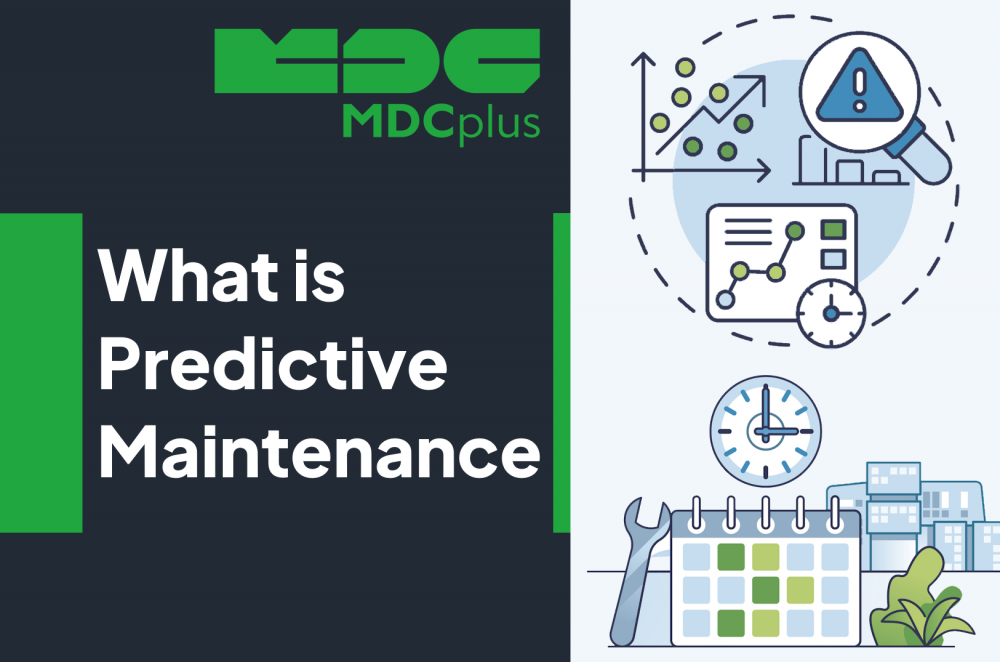No more manufacturing downtimes
Get started with your projectWhat is Predictive Maintenance
What is Predictive Maintenance?
Predictive maintenance (PdM) is a method of using real-time data to monitor the condition of machines and equipment. Instead of waiting for a machine to break down (reactive maintenance) or servicing it on a fixed schedule regardless of its actual condition (preventive maintenance), predictive maintenance uses sensors and software to tell you when a machine really needs attention.
Think of it like a health check-up for your machines—guided by actual symptoms, not just the calendar.
How Does It Work?
Predictive maintenance uses data collected from machines to look for signs of wear or potential failure. This data might include:
- Temperature
- Vibration
- Noise levels
- Power consumption
- Pressure or fluid levels
This information is collected continuously by sensors and analyzed using software, sometimes powered by machine learning or artificial intelligence. If something unusual is detected—like a bearing that’s starting to vibrate more than usual - the system can alert maintenance teams to check and fix it before it fails.
Which Equipment is Most Commonly Connected?
Not all machines are equally suited for predictive maintenance. The most commonly connected equipment includes:
- CNC machines – Critical in manufacturing, and often run for long hours.
- Motors and pumps – Common in nearly every industry; vibration and heat data are easy to track.
- Compressors – Essential in many processes; failures can shut down entire lines.
- Conveyors – Small issues can cause big bottlenecks if not caught early.
- Industrial HVAC systems – Necessary for quality control and worker safety.
These machines are usually expensive, vital for production, and sensitive to wear. That’s why they’re a priority for PdM.
The Role of Data Collection
Data is the foundation of predictive maintenance. Without it, there's no way to detect problems early.
Data is typically collected through sensors installed on the machine or pulled directly from the machine’s control system (like PLCs or machine monitoring software). This data is then sent to a central system where it can be analyzed—either by people or automated software.
Over time, this builds a historical record of machine behavior. The more data you collect, the better your system becomes at predicting problems accurately.
Why Is Predictive Maintenance Important?
Predictive maintenance has several key benefits:
- Reduces unplanned downtime – Machines are fixed before they fail.
- Lowers maintenance costs – Parts are only replaced when necessary.
- Increases equipment lifespan – Early fixes prevent bigger damage.
- Improves safety – Catching issues early reduces the risk of accidents.
- Boosts productivity – Reliable equipment keeps production on track.
In highly competitive industries like aerospace, automotive, or precision manufacturing, even a few hours of unplanned downtime can have serious consequences. That’s why many companies are turning to predictive maintenance to keep their operations efficient and reliable.
About MDCplus
Our key features are real-time machine monitoring for swift issue resolution, power consumption tracking to promote sustainability, computerized maintenance management to reduce downtime, and vibration diagnostics for predictive maintenance. MDCplus's solutions are tailored for diverse industries, including aerospace, automotive, precision machining, and heavy industry. By delivering actionable insights and fostering seamless integration, we empower manufacturers to boost Overall Equipment Effectiveness (OEE), reduce operational costs, and achieve sustainable growth along with future planning.
Ready to increase your OEE, get clearer vision of your shop floor, and predict sustainably?
